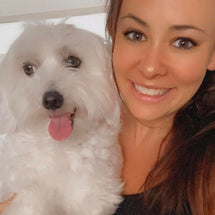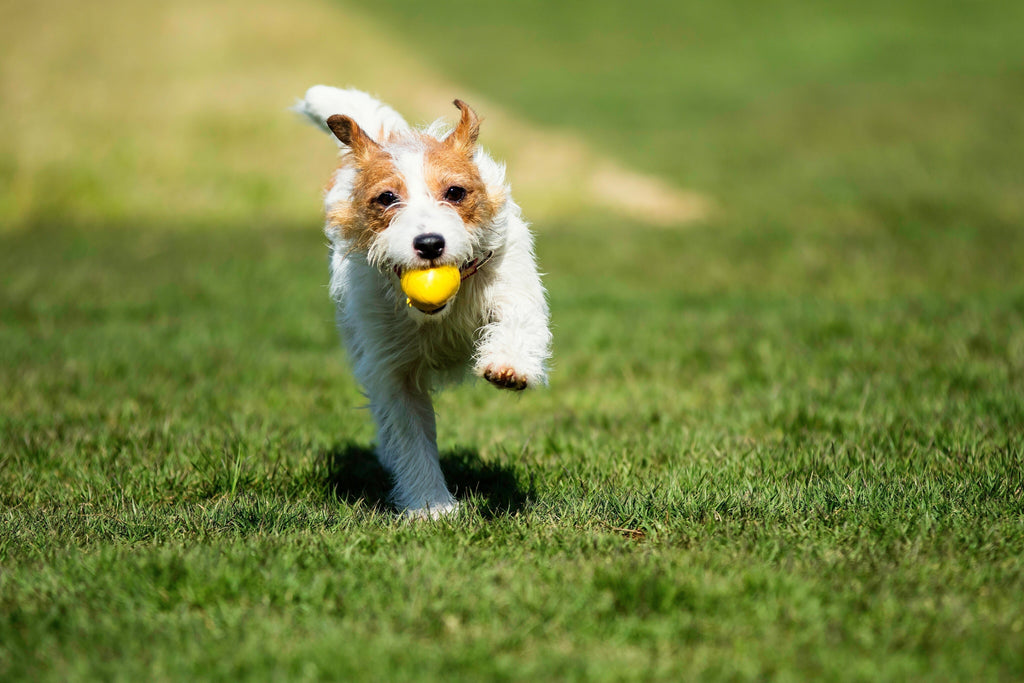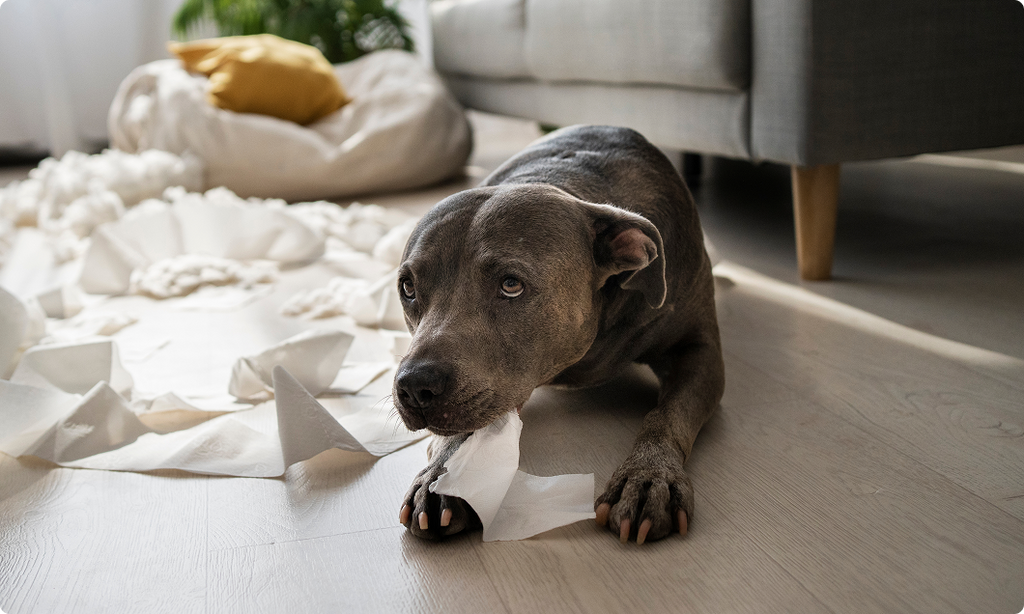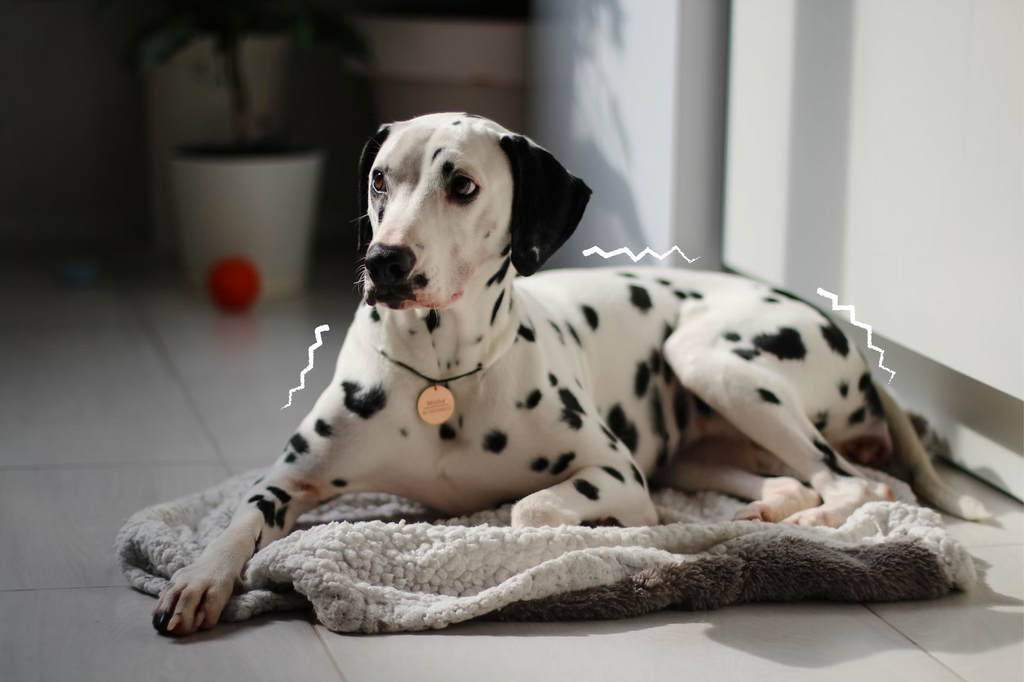Hot Spot on Dogs

Have you ever noticed you wake up and overnight your dog has developed a moist, red spot on their body that they just wont stop licking? This is likely a Hot Spot!
Hot spots, or acute moist dermatitis, are a common skin condition that can make your dog itchy, uncomfortable, and miserable. If you’ve noticed your dog constantly licking, scratching, or chewing at a specific area of their skin, they may have a hot spot. These red, inflamed, and moist lesions can spread quickly and cause pain, making them an issue you’ll want to address promptly.
What Are Hot Spots?
A hot spot is a localized skin infection caused by bacteria. It usually appears as a red, moist, and irritated patch of skin that may ooze pus. As your dog continues to lick, chew, or scratch the area, the skin becomes more inflamed, and the infection can worsen and spread.
Hot spots can pop up suddenly and grow quickly, so catching and treating them early is important to avoid complications.

What Causes Hot Spots on Dogs
Hot spots occur for several reasons, often as a secondary response to another underlying issue. Some common causes include:
- Allergies: Environmental allergens (like pollen, dust mites, and mould), food allergies, or flea allergies can trigger itching, leading to excessive scratching or licking that causes a hot spot.
- Moisture: Dogs with thick fur or skin folds may develop hot spots if their skin stays moist for too long, whether due to swimming, bathing, or wet weather.
- Fleas or Parasites: Flea infestations or other parasitic bites can cause intense itching, which can lead to hot spots if left untreated.
- Ear Infections: If a dog has an ear infection, they may scratch around the ear, resulting in a hot spot near the area.
- Grooming: Mats, knots, and dirty fur can irritate the skin, trapping moisture and bacteria, which increases the likelihood of hot spots.
- Stress or Anxiety: Dogs with anxiety or compulsive licking habits may develop hot spots as a result of over-grooming.
Breeds Most Likely to Get Hot Spots
While any dog can develop a hot spot, some breeds are more prone to them due to their skin type, fur texture, or propensity for allergies. Breeds most likely to experience hot spots include:
- Golden Retrievers
- Labrador Retrievers
- German Shepherds
- St. Bernard's
- Newfoundland's
- Bernese Mountain Dogs
Breeds with thicker coats, a predisposition to allergies, or moisture-trapping fur tend to experience hot spots more frequently.
How to Treat a Hot Spot
If you're unable to visit the vet immediately, there are a few home remedies you can try to help your dog heal until their appointment. However, it's important to note that human medications like Neosporin®, hydrocortisone, and Vaseline® should never be used on dogs. These topical creams and ointments often cause dogs to lick the affected area even more, potentially making the problem worse.
- Trim the Fur: Carefully trim the fur around the hot spot to prevent further moisture from getting trapped and to allow the area to breathe.
- Clean the Area: Gently clean the hot spot with a mild, water-based antiseptic spray or wipe, such as Chlorhexidine 3%, or use an antibacterial shampoo. This helps to remove bacteria and prevent further infection.
- Topical Treatment: Apply a vet-recommended hot spot treatment, such as an antibacterial spray, cream, or medicated shampoo to soothe the skin and reduce inflammation.
- Stop the Licking: Use an Elizabethan collar (cone) to prevent your dog from licking, chewing, or scratching the area, which can further irritate the skin.
- Visit Your Vet: In some cases, hot spots can be very painful or spread quickly. Your vet may prescribe oral antibiotics or anti-inflammatory medication to help your dog heal faster.
- Address Underlying Causes: If allergies, fleas, or ear infections are triggering the hot spot, be sure to treat the root cause to prevent recurrence.

Dietary Support for Dogs Prone to Hot Spots
Diet plays an essential role in maintaining your dog’s overall skin health. Here are a few nutritional components to look for when feeding dogs prone to skin issues like hot spots:
- Omega-3 and Omega-6 Fatty Acids: These essential fatty acids help reduce inflammation and support healthy skin. Foods rich in Omega-3s, such as salmon, sardines, or flaxseed, can soothe itchy, inflamed skin.
- Probiotics: A healthy gut can support a strong immune system. Probiotics help balance your dog’s digestive system, reducing the risk of allergic reactions that can lead to hot spots.
- High-Quality Protein: Choose a diet with high-quality, easily digestible protein sources like fish or chicken. Avoid foods with low-quality fillers, as they can trigger allergies and skin irritation.
- Vitamin E: This antioxidant promotes healthy skin by repairing damage and maintaining a protective barrier. Foods like spinach and broccoli can boost your dog’s intake of Vitamin E.
- Zinc: Zinc is another crucial mineral that supports skin repair and immune function. Zinc-rich foods like pumpkin seeds or green leafy vegetables are excellent additions to your dog's diet.
Preventing Hot Spots on Dogs
Preventing hot spots requires a proactive approach to your dog’s grooming, lifestyle, and diet. Here are a few tips to help prevent hot spots from recurring:
- Groom Regularly: Regular brushing and grooming help keep your dog’s coat clean and mat-free, allowing air to circulate around the skin.
- Keep Your Dog Dry: After baths, swimming, or wet weather, make sure to thoroughly dry your dog, especially if they have a thick coat.
- Use Flea Prevention: Prevent flea infestations by using flea prevention treatments consistently.
- Address Allergies: Work with your vet to identify and address any environmental or food allergies that might trigger hot spots.

Conclusion
Hot spots can be an uncomfortable and painful condition for dogs, but with proper care, they can be treated and prevented. By addressing the root cause, providing quick treatment, and supporting your dog's skin with a balanced diet rich in Omega-3s, vitamins, and probiotics, you can help your pup stay healthy and happy.
If your dog continues to suffer from recurring hot spots, consult your vet to ensure you’re doing everything possible to manage and prevent the condition.
Hot Spot on Dogs FAQ’s
- What are hot spots?
- Hot spots, also known as acute moist dermatitis, are localized areas of inflamed, infected skin that are typically red, itchy, and moist. They can appear quickly and cause discomfort for dogs.
- What causes hot spots?
- Hot spots can be caused by allergies, flea bites, insect stings, skin infections, poor grooming, or excessive licking and scratching due to stress or boredom.
- Are hot spots contagious?
- No, hot spots are not contagious to other dogs or humans, but they can spread on the same dog if not treated promptly.
- Can hot spots heal on their own?
- Some mild hot spots may heal on their own with proper hygiene, but most require intervention like cleaning, topical treatments, or even antibiotics to prevent infection.
- How are hot spots treated?
- Treatment typically involves cleaning the affected area, trimming the hair around it, and applying topical antibiotics or anti-inflammatory medications. In more severe cases, oral antibiotics or steroids may be needed.
- How can I prevent hot spots in my dog?
- Regular grooming, keeping your dog’s coat dry, treating underlying allergies, and ensuring a balanced diet rich in Omega fatty acids can help prevent hot spots.






